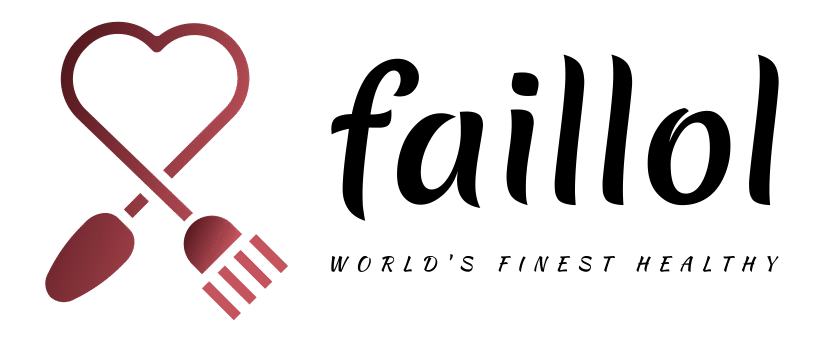Health Misinformation Laws: A Free Speech Crisis? in an age where every opinion, article, and video can be shared globally in seconds, the proliferation of health-related falsehoods poses a palpable threat. Governments and platforms grapple with how to combat dangerous health misinformation laws without trampling on fundamental liberties. This dynamic tension between safeguarding public health and upholding free speech has become one of the defining quagmires of our time.
Exploring this topic requires a multifaceted approach. We will delve into the rise of health misinformation, the rationale behind legislative responses, the ethical and legal tensions at play, comparative international frameworks, and potential pathways to harmonize free expression with communal safety.

The Surge of Health Misinformation
Digital Acceleration
The internet revolutionized information access—but at a cost. In decades past, medical knowledge disseminated via vetted journals and accredited professionals. Today, anyone with a smartphone can publish unverified “cures” or conspiracy theories about vaccines. The result is a wildfire of sensational headlines and panaceas that captivate the uninitiated.
Real-World Consequences
False claims about miracle treatments or dire side effects have tangible repercussions:
- Vaccine Hesitancy: Resurgence of measles and other preventable diseases.
- Self-Harm: Individuals ingesting toxic substances touted as cures.
- Erosion of Trust: Skepticism toward health authorities and experts.
These outcomes underscore why some jurisdictions have introduced health misinformation laws—to stem the tide before it becomes a tsunami.
Defining Health Misinformation Laws
At their core, health misinformation laws are statutory measures aimed at restricting the creation, distribution, or promotion of false or misleading health content. Such laws may:
- Criminalize deliberate fabrication of harmful health advice.
- Mandate removal of flagged content by digital platforms.
- Impose penalties on individuals or entities spreading egregious falsehoods.
The design of these laws varies widely, reflecting divergent legal traditions, cultural values, and risk tolerances.
Rationale and Objectives
Protecting Public Health
When misleading information endangers lives, interventions can be akin to triage. Health authorities argue that timely removal of viral misinformation can reduce hospitalizations and deaths, especially during pandemics.
Preserving Institutional Credibility
Unchecked conspiracies can undermine trust in long-established agencies—from the World Health Organization to local health departments. By curbing blatant falsehoods, health misinformation laws aim to safeguard institutional legitimacy.
Maintaining Social Order
In extreme cases, health panics can trigger mass unrest. False rumors about bioterror attacks or poisoned water supplies can spark riots. Legislators view misinformation controls as a bulwark against societal chaos.
Ethical and Legal Tensions
Free Speech vs. Public Safety
Freedom of expression is enshrined in international covenants and domestic constitutions. Any restriction must clear high thresholds:
- Legality: Laws must be precisely drafted, avoiding vagueness.
- Necessity: Restrictions should target imminent, demonstrable harm.
- Proportionality: Measures must be no more restrictive than required.
This triad—legality, necessity, proportionality—is the rubicon for health misinformation laws. Crossing it risks sliding from protection into censorship.
The Chilling Effect
Broad or ambiguous statutes can deter legitimate discourse. Researchers exploring unconventional therapies, or whistleblowers spotlighting real health hazards, might self-censor to avoid legal repercussions. Such a “chilling effect” undermines both innovation and accountability.
Vagueness and Overreach
Defining “misinformation” can be fraught. Medical knowledge evolves, and what was once deemed false may later be validated. Laws too rigid may outlive their purpose, criminalizing outdated views or stifling scientific debate.
Comparative International Approaches
Germany: Network Enforcement Act (NetzDG)
Although primarily aimed at hate speech, NetzDG compels platforms to remove illegal content—including health falsehoods—within 24 hours. Fines reach €50 million for noncompliance. Critics argue that the stringent deadlines lead to overzealous takedowns, illustrating the perils of blunt instruments in the health misinformation laws toolkit.
Singapore: Protection from Online Falsehoods and Manipulation Act (POFMA)
POFMA empowers ministers to issue “correction directions” demanding that platforms append disclaimers to or remove false statements. The law addresses any false statement of fact, including health-related claims. While heralded for its effectiveness during COVID-19, detractors decry its potential misuse to suppress dissent.
United States: Section 230 and Voluntary Platform Policies
In the U.S., Congress has largely resisted direct statutory controls on speech, instead relying on Section 230 of the Communications Decency Act, which shields platforms from liability for user-generated content. However, major tech companies have implemented voluntary policies to label or remove demonstrably false health claims. This hybrid model underscores a preference for private governance over government mandates in addressing health misinformation.
Platform Responsibilities and Innovations
Fact-Checking Partnerships
Many platforms partner with independent fact-checkers. When content is flagged, a label warns viewers that the claim is disputed, often linking to authoritative sources. This “soft” moderation respects free speech while guiding audiences to reliable information.
Algorithmic Demotion
Rather than outright removal, some systems demote the visibility of flagged posts, curtailing their viral potential. This nuanced approach reflects a middle path between free expression and public health safeguarding.
AI-Powered Detection
Machine learning models scan for linguistic patterns and images associated with misinformation. While promising, AI tools can yield false positives, necessitating human oversight to refine accuracy.
Case Studies in Crisis
Ebola Outbreaks
During Ebola flare-ups in West Africa, misinformation ranged from snakebite cures to denial of the virus’s existence. Local governments employed community engagement—leveraging trusted leaders—to dispel rumors, often more effectively than blunt legal edicts. This underscores that health misinformation laws work best when coupled with grassroots outreach.
COVID-19 Pandemic
The COVID era was a crucible for misinformation policy:
- Some countries invoked emergency powers to ban false cures, facing legal challenges around free speech.
- Platforms rapidly expanded their health misinformation policies, sometimes suspending high-profile accounts.
- Grassroots fact-checking networks emerged, translating technical guidelines into local languages.
The pandemic demonstrated that multi-pronged strategies—legal, technological, and educational—are imperative to confront health falsehoods.
Media Literacy: A Preventative Panacea
Legal and platform measures are reactive. The prophylactic alternative lies in robust media literacy:
- Curricular Reforms: Integrate critical thinking and source evaluation into school programs.
- Public Campaigns: Launch multimedia initiatives teaching users to spot red flags—sensational claims, lack of citations, ad homogeneity.
- Community Workshops: Empower local leaders to host interactive sessions, contextualizing misinformation within cultural frameworks.
A literate populace forms the cornerstone of societal resilience, mitigating the need for draconian health misinformation laws.
Pathways to Balance
Precise Legislative Drafting
Future statutes must narrowly target deliberately false content that poses imminent health risks. Definitional clarity and time-bound scopes reduce overreach and preserve debate spaces.
Independent Oversight Bodies
Establishing nonpartisan councils to review takedown orders and policy implementations can enhance accountability. Such bodies should include legal experts, ethicists, public health specialists, and civil society representatives.
Sunset Provisions
Laws addressing health misinformation should include automatic expiration clauses, requiring periodic legislative renewal. This ensures relevance and prevents indefinite constraints on speech.
Enhanced Transparency
Platforms and governments must publish detailed transparency reports—citing takedowns, corrections issued, appeals, and error rates. Visibility fosters trust and invites constructive critique.
The struggle between health misinformation laws and free speech is not a zero-sum game. It demands nuanced strategies that protect communities without undermining democratic values. By weaving together precise legislation, platform innovation, robust media literacy, and independent oversight, societies can chart a path where information thrives and health threats are contained.
In the end, the goal is clear: a public sphere where truth prevails, curiosity flourishes, and individual liberties remain inviolate—striking that golden mean where free expression and public well-being coexist in harmony.






:quality(80))
